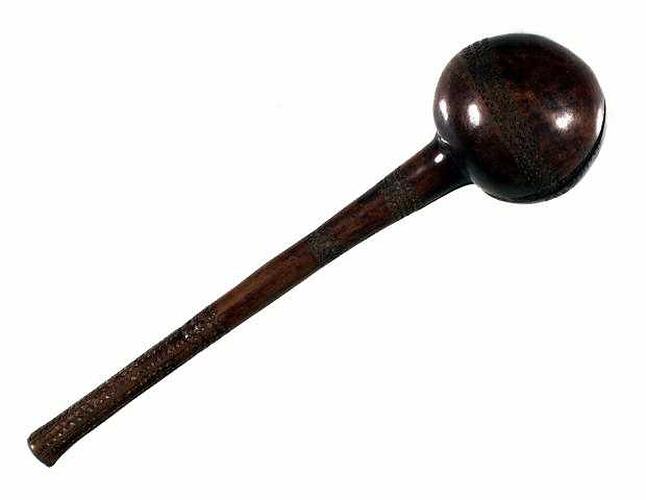Summary
An immense range of weaponry was available to Fijian warriors in their conduct of warfare. Wooden objects account for most of Fiji's material culture. Vesi and other woods were used for the many varieties of clubs, adze handles and canoe timbers. Sacred vesi wood was used for ceremonial objects. The wood carvers of Fiji formed a group known as the 'matai' which incorporated chiefs and specialist carvers. Clubs were made in a number of forms. This one is a throwing club, known as 'i ula drisia' (ball-headed root-club). Clubs were often highly carved, often with 'tavatava' (a zig-zag pattern separated with straight lines) or a chequer pattern, or sometimes patterns resembling coconut cord binding techniques. Clubs might also be used in dancing; for the latter, a light weight wood might substitute for the heavier timber.
Local Name
Iula drisia
Physical Description
A club made from wood comprising a large bulbous, incised head.
More Information
-
Object/Medium
Club
-
Maker
-
Locality
-
Date Produced
-
Object Measurements
410 mm (Length), 110 mm (Width), 110 mm (Height), 110 mm (Outside Diameter)
-
Keywords
-
Type of item
-
Discipline
-
Category
-
Collecting Areas
